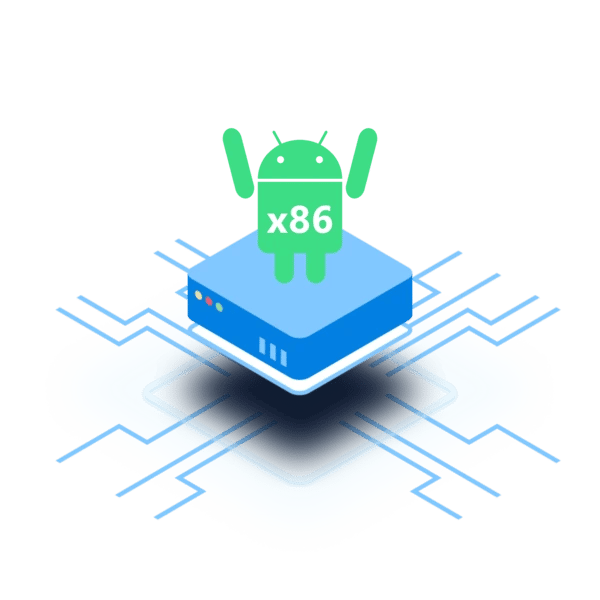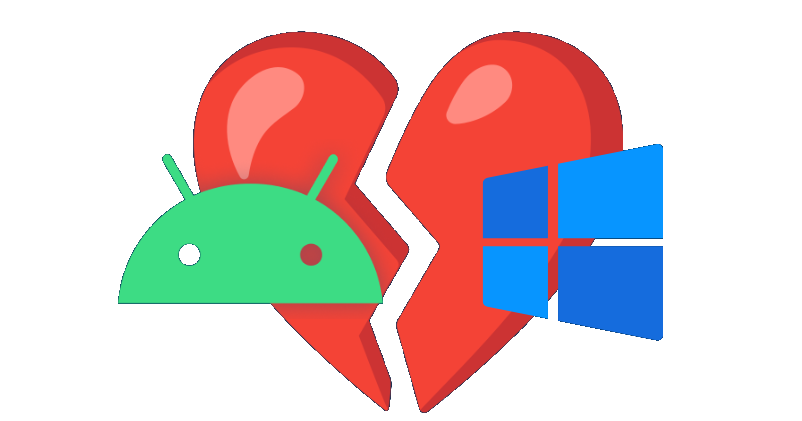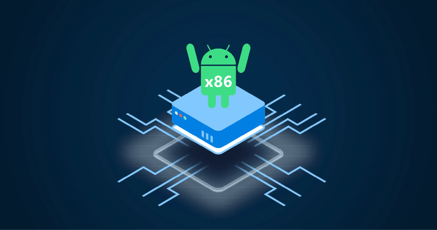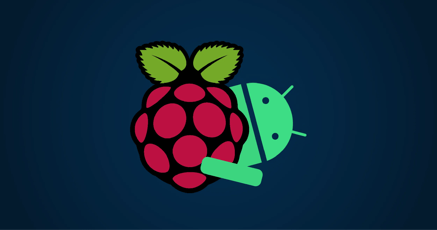Microsoft has published a statement announcing that they will no longer maintain the Windows Subsystem for Android (WSA). Support for WSA, in cooperation with the Amazon Appstore, will be shut down by 2025.
What is Windows Subsystem for Android?
The Windows Subsystem for Android is a compatibility layer that allows users to install and use Android apps on their Windows 11 devices, comparable to the Windows Subsystem for Linux.
The Microsoft WSA project
The Windows Subsystem for Android project started not long ago in October 2021 for the beta channel builds of Windows 11. This made it possible to install and run Android 11 apps (currently Android 13) on Windows devices. Users were now able to install Android apps from any source via the APK file format. Additionally, cooperation with Amazon made it possible to install the Amazon Appstore via the Microsoft Store, thus opening up the operating system to an extensive range of existing and newly developed Android applications.
The original purpose of the project was an answer to Apple supporting iOS apps on macOS and the widely used Android emulators for Windows, which clearly showed the need for users to run Android apps on their laptops and desktop PCs. The project promised a better cross-device and platform experience.
Microsoft kills the Windows Subsystem for Android
While having clear benefits, WSA encountered two significant challenges:
- Encouraging developers to enhance apps for keyboard and mouse compatibility.
- Challenging the dominance of the Google Play Store in Android app distribution by introducing the comparatively smaller Amazon Appstore.
If you are familiar with the Windows Subsystem for Android and have used it before, you live and work in a region where this project is supported. For example, India never was.
It seems that this will be a permanent situation for all Windows devices when moving on from Windows 11. The Amazon Appstore, applications, games, and other WSA functions will no longer be available in the Microsoft Store.
Devices currently using Android Subsystem for Windows will be able to access their apps and the WSA services, including Microsoft support, until March 5, 2025. Microsoft does not allow any new installations of Android apps or the Amazon Appstore. If the Appstore is already installed, new downloads of Android apps will also be blocked.
This is the notification displayed in the official Windows Subsystem for Android documentation:
Important note by Microsoft
"Microsoft is ending support for the Windows Subsystem for AndroidTM (WSA). As a result, the Amazon Appstore on Windows and all applications and games dependent on WSA will no longer be supported beginning March 5, 2025. Until then, technical support will remain available to customers.
Customers that have installed the Amazon Appstore or Android apps prior to March 5, 2024, will continue to have access to those apps through the deprecation date of March 5, 2025. Please reach out to our support team for further questions at support.microsoft.com. We are grateful for the support of our developer community and remain committed to listening to feedback as we evolve experiences." Source
What are the reasons behind this decision?
The reasons for the termination of the Android Subsystem for Windows are still unknown. Neither Microsoft nor Amazon have made an official statement. However, the end of the project seems to be coming from Microsoft.
Amazon writes on a specially created FAQ page:
"Because Microsoft is ending support for the Windows Subsystem for Android (WSA), Amazon Appstore on Windows 11 will no longer be supported after March 5, 2025."
It can therefore only be assumed that the interest of Windows 11 users was rather limited.
Windows Subsystem for Android phase out - FAQ
Is Windows Subsystem of Android phased out?
Will Android apps still run on Windows 11?
Will apps running on Windows 11 via the Amazon Appstore be affected in any way?
Apps currently available on the Amazon Appstore for Windows 11 will remain unaffected until the scheduled discontinuation date (3/5/2025). Developers of these existing apps will still have the opportunity to submit updates for their apps leading up to that date.
Is it possible to install new Android apps on Windows 11 via the Amazon Appstore till the WSA discontinuation date?
Is it possible to install new Android apps on Windows 11 via the APK file format till the WSA discontinuation date?
Is there any action required of developers during this phase out period?
No, no action is required of developers.
Alternatives to Windows Subsystem for Android
Moving forward to March 2025, there will be no way to run Android apps as conveniently on Windows devices as it is currently possible with WSA. However, that does not mean that there are no other options. Even before Windows launched its Subsystem for Android, there were already a wide variety of emulators available for running Android apps on Windows.
What is an Android app emulator?
An emulator enables one computer system, the host, to mimic another, the guest. This enables the host to run software designed for the guest system, for example, running Android apps on Windows.
Two of the more popular options were BlueStacks for gaming and Android Studio for app testing. These options are still around. While it will not be possible to use WSA to install APK files or the Amazon Appstore to install apps on Windows, it will still be possible to use an emulator to run and test Android apps.
While this is a valid option for private use cases and some businesses in need of specific Android apps on their business computers, it is not a great solution when building products heavily relying on running Android apps.
Reasons why common Android emulators are not a great solution when building products
The main reason why third-party emulators, like BlueStacks, are not a sustainable solution for businesses is that emulators usually cannot replicate the full range of hardware configurations and system behaviors found in actual Android devices. As a result, compatibility issues with certain apps or features are possible, limiting the ability to leverage both native Android and Windows functionalities alike.
Besides compatibility, delivering performance might be tricky, which can result in challenges related to speed, responsiveness, and the overall user experience.
One of the most important aspects for professional devices is safety. Third-party services may introduce potential security vulnerabilities. This can pose risks for professional devices that require robust security measures to protect sensitive data and user privacy.
An exception is Android Studio, which does not share those issues with common emulators, but Android Studio is first and foremost a developer tool. It is not designed to continuously run Android apps on Windows in a user-friendly way.
Why use Android apps at all?
Apparently, running Android apps with an emulator is not the best solution. Why running Android apps on Windows at all? Windows is a popular operating system for all sorts of professional devices. Here are some examples:
- Point-of-Sales Systems
- Shop Floor Displays
- Digital Signage Solutions
- Kiosk Solutions
- Human Maschine Interfaces (HMI)
- ...
Taking a closer look at those examples shows that quite a lot of Windows products are operated by a touchscreen display. This is the reason why Android apps come in so handy. Android is the most user-friendly solution for touch devices, providing an outstanding app user experience.
While manufacturers may focus on producing Windows-based products, it's essential to note that Android devices also play a significant role in many product lineups. With WSA, an app could be used on several developer platforms without having to make any further changes.
Besides, Android is especially developer-friendly. It offers a comprehensive set of development tools, documentation, and support, making it accessible for developers to create and publish apps. This, coupled with the widespread adoption of Android devices, makes it a very popular development platform with a very active developer community, allowing easier access to great apps and developer services.
Why not use Android as an operating system in the first place?
In the past, many devices have been built based on Windows. This is because Windows runs on x86 architecture, whereas, Android was designed to run on ARM chipsets. This has changed over time. The Intel Celadon project makes Android available to a wide range of x86 devices. So the question of ARM vs. x86 is no longer just about software support.
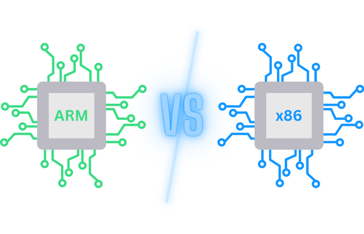 The main argument for choosing x86 over ARM was that ARM is less powerful than x86 for high-performance computers. But this statement has become outdated. ARM processors nowadays are becoming more powerful. However, many products are still based on x86 running Windows.
The main argument for choosing x86 over ARM was that ARM is less powerful than x86 for high-performance computers. But this statement has become outdated. ARM processors nowadays are becoming more powerful. However, many products are still based on x86 running Windows.
As it is resource-intensive to change platforms, the Android Subsystem for Windows was a particular boon for these devices. Product builders could take advantage of the benefits of Android apps without having to introduce a new operating system for their hardware platforms. With the discontinuance of the project, this option is no longer feasible.
It's time to opt for Android as an operating system!
How to change from Windows to Android OS
Intel has created an Android open-source platform, which is a great alternative to relying on the Android Subsystem for Windows. The project is called Intel Celadon. It enables Android to run on Intel x86 architectures in a virtual machine (VM).
Emulation vs. virtualization
Emulation and virtualization both aim to run software on non-native environments, but their approaches differ: Unlike emulation, where you need a software layer for hardware interaction, virtualization can directly access hardware via a hypervisior. Virtualization is the better option to run different OSs on a single machine.
Enterprise-ready Android on x86
 emteria has partnered with Intel to enhance Celadon even further with frequent Over-The-Air software updates, additional enterprise features such as native Kiosk mode, Mobile Device Management capabilities for remote management, and a trusted customer support. This makes Celadon a reliable enterprise solution to run Android on x86 architecture.
emteria has partnered with Intel to enhance Celadon even further with frequent Over-The-Air software updates, additional enterprise features such as native Kiosk mode, Mobile Device Management capabilities for remote management, and a trusted customer support. This makes Celadon a reliable enterprise solution to run Android on x86 architecture.
Setting up Celadon itself can be challenging depending on the device, so emteria offers a setup wizard to easily install and customize Celadon.
Using Android as your OS frees your company from architecture dependence. Through emteria and Celadon, Android can run on both ARM and x86 architectures, giving you even greater freedom.
Say goodbye to Windows Subsystem for Android and start your Android journey today.
Interesting links and sources
- Microsoft Learn - Windows Subsystem for Android TM
- Amazon Appstore Developer - Amazon Appstore on Windows 11 to be discontinued
- Mishaal's Android News Feed - Microsoft is ending support for WAS
- Android Police - Microsoft just killed off Windows Subsystem for Android
- WinFuture - Microsoft zieht Stecker: Das Aus für Android-Apps unter Windows 11
Build unique Android products, keep them up-to-date
See why emteria is the chosen Android™ customization & management platform for product builders — build Android products based on x86 and ARM architectures.
